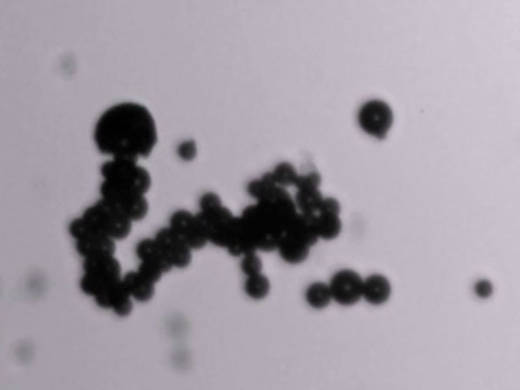A tiny self-propelled drug-delivery device might someday make taking antibiotics safer and more efficient. Think of it as a tiny submarine scooting around inside your stomach, fueled by the acid there.
Oral antibiotics are commonly prescribed life-saving drugs. Once an antibiotic is swallowed, it takes a trip to the stomach, where there's lots of acid. That stomach acid can break chemical bonds in the antibiotic and deactivate it.
To keep that from happening, doctors often prescribe acid-reducing medications like Prilosec or Prevacid. But they can cause side effects such as headache, diarrhea and fatigue.
So scientists at the University of California, San Diego, came up with a device designed to both reduce stomach acid and deliver medication without the side effects.
The swallowable device reacts with stomach acid release of tiny hydrogen bubbles. The bubbles scoot it around the stomach, and a magnesium core reduces acidity as it goes. The tiny device is covered by a special polymer, like a jacket, that is sensitive to changes in the acidity. Once the acid in the stomach is neutralized, the polymer dissolves and the submarines unload their antibiotic payload.

9(MDAxOTAwOTE4MDEyMTkxMDAzNjczZDljZA004))